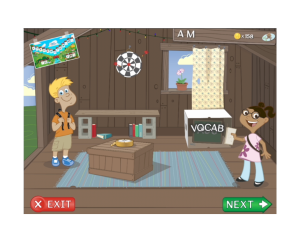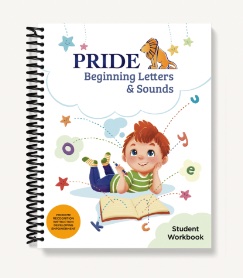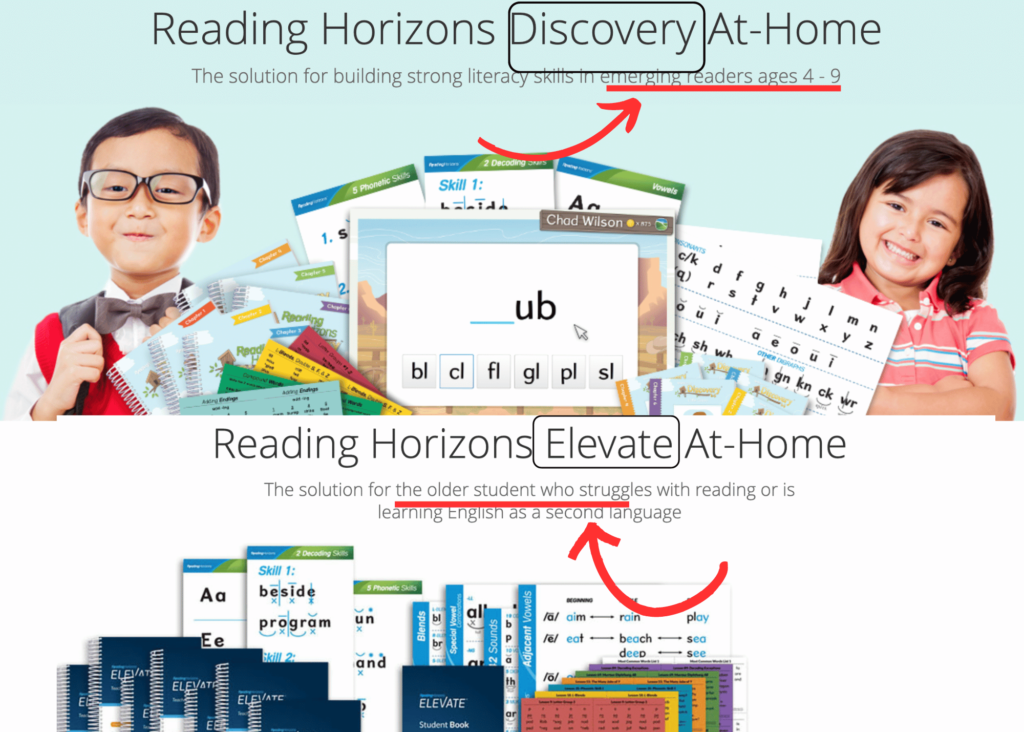Have you heard of the Orton-Gillingham approach to teaching reading, but you’re not sure of what exactly it is, or why it’s become such a popular option in reading instruction?
Then, keep reading, because this article is for you!
In today’s post, we’ll take a close look into the Orton-Gillingham approach.
If you are wondering whether this is the right choice for your children or students, after reading this article, you’ll have clarity on what to expect and will be able to figure out whether this is the right fit in your case.
Besides, we’ll also look at some popular Orton Gillingham curricula, and explain the main differences among them.
*Affiliate Disclosure: This post may include affiliate links, meaning I could get a little commission if you buy from them, at no additional cost to you. This helps keep the information on this blog free and available to everyone.
In a rush?
What is the Orton-Gillingham approach in a nutshell?
The Orton-Gillingham approach is a structured, multisensory method for teaching reading, spelling, and writing skills. It is designed to help individuals with dyslexia or other language-based learning difficulties by emphasizing phonemic awareness, phonics, and language rules through visual, auditory, and kinesthetic techniques. While initially geared toward dyslexic people or struggling readers, anyone can benefit from this model of learning to read.
Orton Gilligham curricula side-by side!
| Curriculum | All About Reading/ All About Spelling | Logic of English | Reading Horizons | Pride | Explode the code |
|---|---|---|---|---|---|
| Main features | 1. Solid curriculum 2. No-gaps approach 3. Easy to use 4. Scripted lessons 5. Review introduced through games and fun activities 6. 20 minute lessons + read aloud practice time | 1. Extremely comprehensive 2. Goes deep into the rules and the "logic of English" 3. May take a learning curve at first 4. Involves lots of drilling and practice 5. Effective system. Expect sudden exponential growth 6. Longer lessons (30-min lessons approx.) | 1. Designed for logical thinkers 2. Unique marking system 3. Software, Guided Materials or blended instruction. 4. Supplemental materials & language packs. 5. Can be used by older students and adults as well. 6. Detailed reports available (software) | 1.Meets diverse special learning needs (dyslexia, speech deficits, etc.) 2. Scripted step-by-step system 3. No prep needed or previous research 4. Aligned with the Science of Reading 5. Placement test available 6. Aligned with Common Core Standards | 1. Workbooks are the real gem of this program 2. Teacher's guide is ok, but other available options can give parents more guidance. 3. No decodable books in this curriculum. 4. Reinforce learning using their high-quality workbooks. 5. Online version of the program available. 6. "Explode the Code for English Language Learners" available. |
| More info and Buying Options | HERE! | HERE! | HERE! | HERE! | HERE! |
| Curriculum Image |  |  |  |  |  |
The Origins of the Orton-Gillingham Approach
The Orton-Gillingham approach was the developed back in the early 20th century by Samuel Torrey Orton, a neuropsychiatrist and pathologist at Columbia University, and the educator and phycologist Anna Gillingham, to help struggling readers and students with dyslexia.
This method was ground-breaking at the time for several reasons.
It was the first method created with the explicit goal of assisting struggling readers by focusing on teaching the relationships between letters and sounds, while introducing concepts in a well-organized and incrementally progressive manner.
Besides, it also pioneered the use of multi sensory activities for teaching reading. The Orton-Gillingham approach involves all the senses (sight, hearing, touch and movement) for a more holistic and robust learning experience.

What is the Orton-Gillingham approach?
As we’ve seen before, the Orton-Gillingham approach to teaching reading is explicit, structured and extremely gradual.
This approach incorporates synthetic phonics principles to provide clear reading instruction. It also emphasizes a multi sensory approach, ensuring that students engage multiple senses while learning. Additionally, a significant focus is placed on understanding of the logic behind the spelling system, which enhances learning and aids in long-term memory retention.
I know! Lots of big words and jargon. Let’s go one by one through the different concepts for clarity!
Explicit:
This means that you explicitly teach the connections between letters and sounds, as opposed to implicit where you expect students make their own inferences and learn these connections without learning explicit rules, just by exposure to language.
Structured and gradual:
The order in which concepts are introduced and skills are developed is extremely controlled, going from simple to more complex skills in a strategic way.
Skills involved in reading are developed over time, and build on top of each other gradually. In that regard, curriculums that follow the Orton-Gillingham place a great deal of importance on the use an extremely well-thought-out scope and sequence, putting a lot of thought to this, as it is one of the pillars of the OG success.

Synthetic Phonics:
In synthetic phonics, children learn the connections between the letters and the sounds of spoken language.
Children are trained to identify and segment the individual sounds in words, and learn how to put all of these sounds together (blend the sounds) to read words.
In synthetic phonics, you go from the part to the whole; that is, from the individual sounds in words (phonemes) to the words, rather than the other way around.
Multi sensory:
One of the main ideas behind the Orton-Gillingham approach is to take the three pathways to the brain for a much more holistic/ robust learning experience. One of the pathways is the multi sensory approach, and involves the integration of kinaesthetic and tactile strategies with the teaching of auditory and visual concepts.
By engaging different senses we are encouraging the left side and the right side of the brain to work together, creating stronger connections.

Understanding the logic behind the spelling system:
Orton-Gillingham curricula teach structured language patterns, such us syllable division and spelling rules. It is important to recognize the significance of comprehending the underlying logic within the English spelling system, especially for some struggling readers.
This understanding greatly aids in the process of learning and ensures the retention of information over the long term.
What curriculums follow the Orton-Gillingham approach to teaching reading?
A few examples of literacy curricula based on the Orton-Gillingham approach to teaching reading are:
All About Reading/All About Spelling:
This is one of the most highly-regarded OG programs.
As you’d expect from an OG-based program, All About Reading/All About Spelling focuses on the three pathways to the brain (including, the multi-sensory, auditory, and visual pathway) for a more holistic learning experience.
It emphasizes phonemic awareness, as research suggests it is the most significant predictor of reading success.
The program is suitable for all children, not just those with dyslexia, and offers what they call a “no-gaps” approach, ensuring that concepts are explained thoroughly. In that regard, this curriculum introduces only one concept at a time with very clear direct instructions.
It is a sequential and logical program with opportunities for review (the idea is that your child truly masters the skills you are focusing on before moving on to the next set of skills!) and separate instruction in reading and spelling.
It consists of 5 levels (reading) and 7 levels (spelling).
While the program is highly regarded for its effectiveness, it can also be a significant investment for some families. However, it offers a one-year money-back guarantee and has a dedicated team with excellent customer service!
Learn MORE About All About Reading!
Logic Of English:
Logic of English offers a comprehensive approach to reading and spelling, delving into the “Logic of English” and explaining the reasons behind spelling and reading patterns.
The program introduces all the sounds that letters can make simultaneously, rather than teaching them one at a time. It incorporates games and interactive activities to make learning engaging and offers instruction in reading, writing, and spelling simultaneously.
One notable difference is that the program gives the option to choose between cursive and manuscript handwriting styles, with cursive being recommended for its cognitive benefits.
The program is available in different modules and levels, catering to different grade levels. While the program may be expensive, it is considered a high-quality option with a 90-day money-back guarantee.
Overall, the Logic of English program provides a comprehensive and engaging approach to reading and spelling instruction, offering a deeper understanding of the English language and its rules.
Learn MORE About Logic of English!
Explode the Code:
The program consists of workbooks, teacher’s guides, and the “Beyond the Code” series for reading comprehension and reasoning skills.
The workbooks are affordable and offer well-thought-out exercises that target sound awareness, phoneme manipulation, reading, spelling, and writing.
The curriculum progresses from vowel sounds to consonant blends, digraphs, syllables, and suffixes. However, it lacks decodable readers, and additional resources such as teacher’s guides and external decodable books may be necessary.
While the Explode the Code curriculum is highly regarded for its workbooks and adherence to the Orton-Gillingham approach, some areas for improvement include providing more guidance for blending sounds and offering decodable readers at the beginning.
Overall, the program is considered a valuable reinforcement tool for phonics instruction, but may require supplementary materials for a more comprehensive reading program.
>> If you want to learn more about this program, check out this detailed review of Explode the Code!
Reading Horizons:
Reading Horizons is an interactive reading system based on the principles of Orton-Gillingham, which focuses on teaching students to recognize sounds in a specific order and train their brains to process language effectively.
It provides a structured and methodical approach to teaching dyslexic students how to read.
Reading Horizons has been designed as an alternative to in-person tutoring, allowing students to progress at their own pace, and offering parents resources and knowledge to become “reading specialists” for the own children.
It offers two options: Discovery (for ages 4 – 9) and Elevate (for 10+)

The program starts with an automated student assessment to determine which lessons to address first.
Lessons combine recorded audio and interactive graphics, and include comprehension activities and language skills activities. The linguistic history and reasons behind spelling and pronunciation rules are also explained on the lessons to facilitate learning sometimes.
The system provides feedback and offers additional practice or video refreshers when needed.
At the time of writing this article, Reading Horizons offers a 30-day trial for only $10, and an annual subscription for under $200, covering up to two students.
Additional students can be added for $25 each.
Pride
The PRIDE Reading Program provides solid foundation to young learners with dyslexic traits. For instance, the student workbook is intentionally designed to minimize visual overload for dyslexic kids, taking into account their sensitivity to excessive stimuli.
Lessons in the Teacher’s Guide are scripted in a step-by-step manner. They are extremely detailed, but, most importantly… It’s incredibly simple to use! In fact, that’s one of the highlights of this program: its simplicity. You don’t need any special preparation for the lessons or to do any previous research.
You also have access to the online Teacher’s Guide, which offers a user-friendly format, with each step clearly outlined in a vibrant orange box.
The simplicity of the guide plus the availability of training videos is very empowering for homeschool parents with a dyslexic child. It can really give you the confidence you need to believe in your ability to effectively remediate your child’s dyslexia! And this is very powerful (and needed!) when teaching a struggling reader!
If you are unsure of where to start with your child, you can do a placement test on their site or you can even download samples of the curriculum materials.
These are only a few examples of good-quality, well-regarded Orton-Gillingham programs!
But, of course, there are many more curricula inspired by the Orton-Gillingham approach than these!
What are the secrets behind OG success? Why has it become so popular?
Explicit instruction has been proven to be helpful for all children, as it reduces cognitive load, but particularly good for dyslexic children or children with other learning differences.
These students need clear instructions. Sometimes they simply may not make the inferences necessary to fill the gaps when given vague instructions.
Instruction in multiple formats – text, visual, gesture, audio- activates different cognitive skills and facilitates retention in short and long-term memory.
A key factor contributing to this success lies in the deliberate emphasis placed on a high-quality scope and sequence.
The thoughtful design of the scope and sequence serves as a guiding framework, ensuring a comprehensive and effective learning journey for students.
Alternatives to the OG approach
While the Orton-Guilligham approach may be considered “the gold standard” by many people these days, that doesn’t mean they are the one and only option you’ve got!
Many people like them and achieve great results with them, and that’s why they’ve become very popular.
However, there are other approaches to teaching reading that can deliver good results as well.
If you want to learn more about other styles in literacy instruction, check this article out!

Hey there! I’m Laura – an author, YouTuber, blogger, and the creator of the “Learning Reading Hub” platform. I created this space to dive into the world of reading instruction and to shout from the rooftops about how vital it is to use the right methods for teaching reading. I’ve got a TEYL certification (Teaching English to Young Learners), plus a Journalism degree from the University of Navarra in Spain, along with a Master’s Degree in Communication.
I’ve always loved digging into research, jotting down my thoughts, connecting with people, and sharing what makes me tick. With a background in marketing, digital projects, and the education scene (especially language learning), I’m all about wearing different hats.
When my first kid needed to learn how to read, it opened my eyes to the challenges and complexities involved. This journey took me through a rollercoaster of self-teaching, eye-opening discoveries, and yeah, some letdowns too. There’s so much conflicting info out there, along with methods that just don’t cut it. And let’s face it, these issues are way too common.
Now, I’m all about channeling that passion (without sounding like a know-it-all!) and sharing my journey. My mission? Making it easier for those who are on the same path I once was.
My heart’s with my family and the amazing Learning Reading Hub project. I live with my husband and two little ones, raising them in a bi-lingual environment (English and Spanish).



